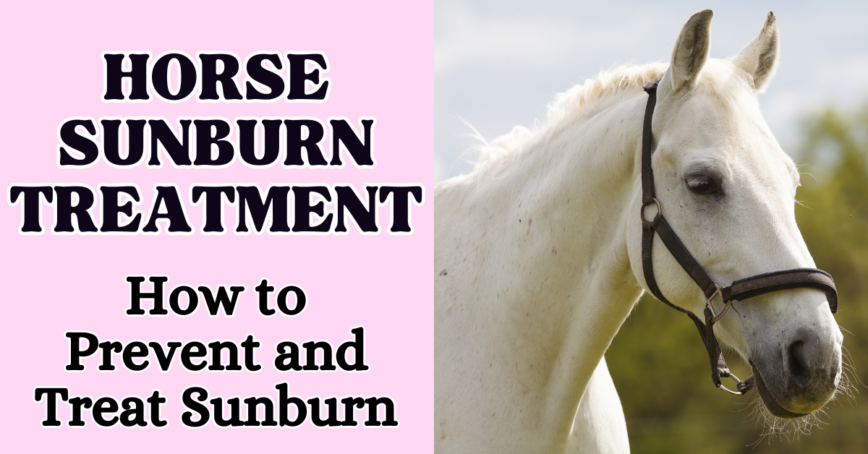
This post will show you the best horse sunburn treatment and how to prevent your horse from becoming sunburned this summer.
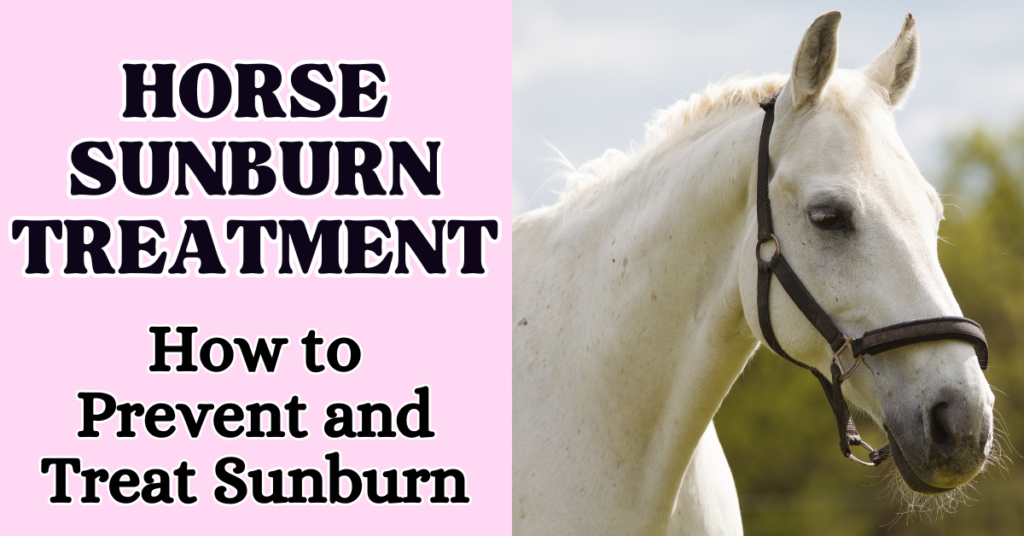
How to Treat Horse Sunburn: Tips for Horse Owners
As the summer months bring more sunny days, horse owners need to be vigilant about the risks of sunburn. Horses, especially those with light-colored coats, bald faces, or white markings, are susceptible to sun damage.
Prolonged sun exposure can lead to skin damage, severe sunburn, and even skin cancer. Here are some key points and preventive measures to keep your horse safe and healthy under the sun.
Understanding Sunburn in Horses
Sunburn Risk Factors:
- Light-colored coats: Horses with white coats or pale skin are at higher risk.
- Pink skin: Horses with pink noses and pink skin around their eyes and muzzle are more prone to sunburn.
- White markings: Horses with white blazes, white legs, and other non-pigmented skin areas are more vulnerable.
- Bald faces: Horses with bald faces often experience sunburn more quickly.
- Thin coats: Horses with thin coats offer less natural protection against UV rays.
- Direct exposure: Extended periods in bright sunlight without access to shade increase the risk.
Common Sunburn Symptoms
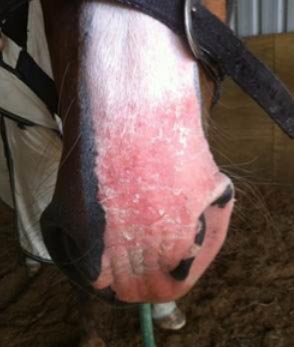
- Redness and inflammation: Early stages of sunburn appear as red, inflamed skin.
- Blisters and peeling: Severe sunburn can cause blisters and peeling skin.
- Sensitivity and pain: Affected areas become sensitive to touch.
- Skin lesions and sores: Prolonged exposure can lead to open sores and skin lesions.
Preventive Measures – Horse Sunburn Treatment
1. Management:
- Limit sun exposure: Plan your horse’s outdoor time during the early morning or late evening, avoiding the hottest parts of the day when the UV light is the highest.
- Provide plenty of shade: Ensure there are shaded areas in the pasture for your horse to retreat from direct sunlight.
- Plant trees if there are none and have a run in shelter available to allow your horse to get out of the direct sun during the day.
2. Protective Gear:
- Face masks: Use fly masks with UV protection to shield your horse’s face.
- Fly sheets: A fly sheet with UV protection can cover the horse’s body, reducing exposure to UV rays.
- Sunscreen: Apply a heavy coating of sunscreen, especially zinc oxide, on vulnerable areas like the muzzle and any white markings.
Here are some products I recommend getting to prevent sunburn:

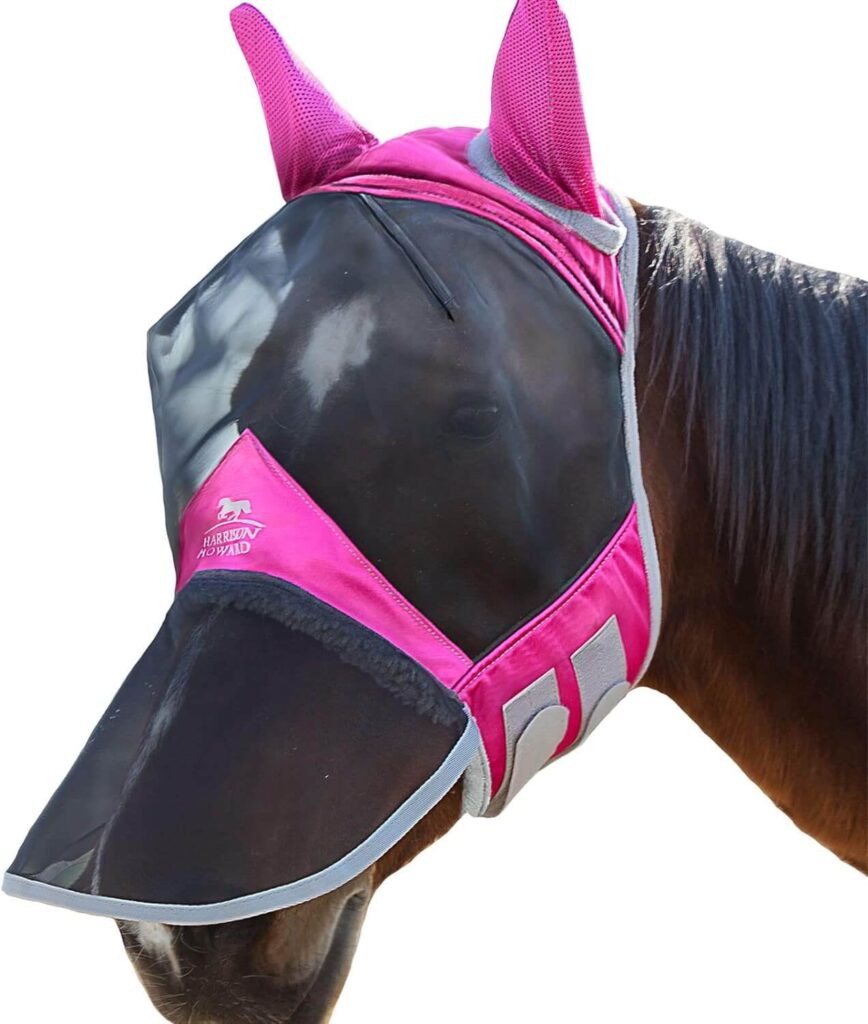
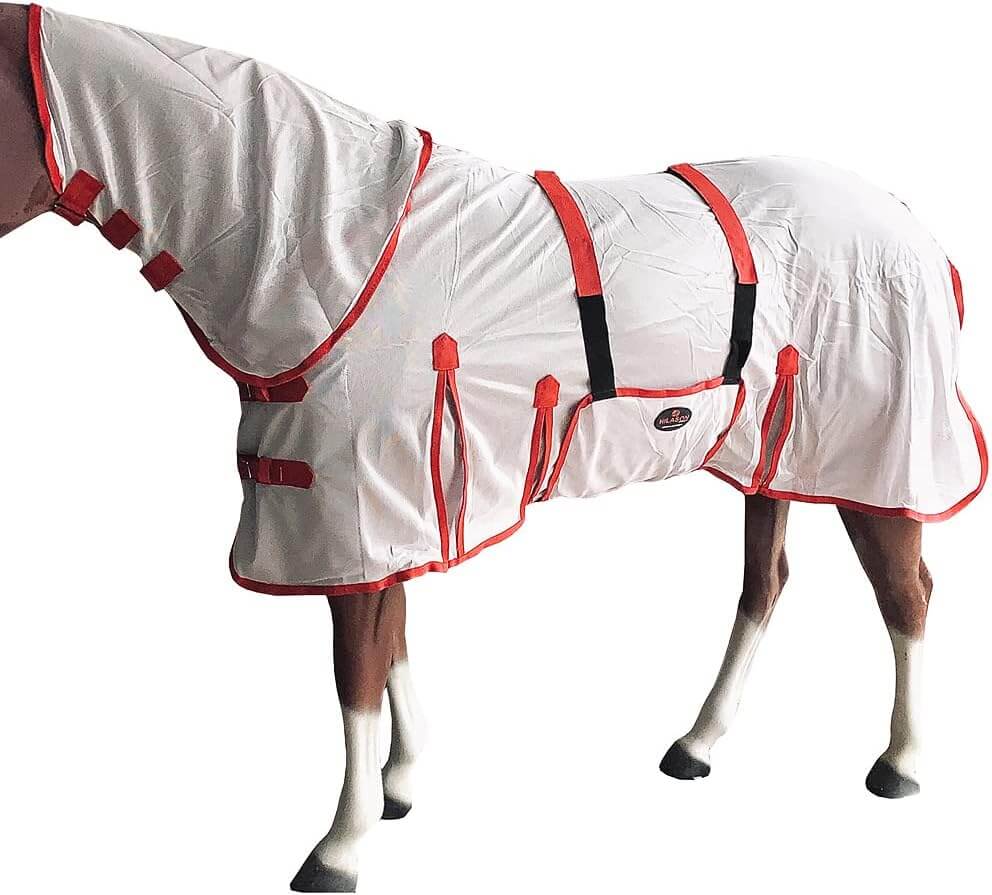
Sunburn from plants that cause photosensitization
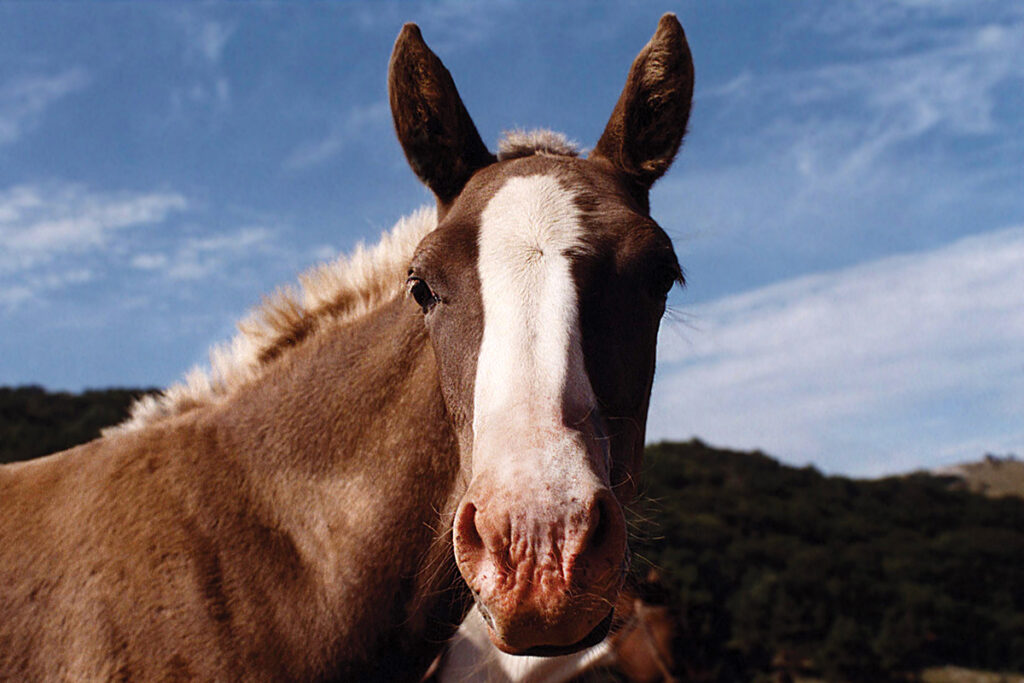
- Primary photosensitization: Caused by ingesting photodynamic agents from plants or medications, leading to UV sensitivity.
- Secondary photosensitization: Often results from liver damage, where toxins accumulate in the bloodstream and cause skin sensitivity. Watch for signs of liver damage, like weight loss and changes in behavior.
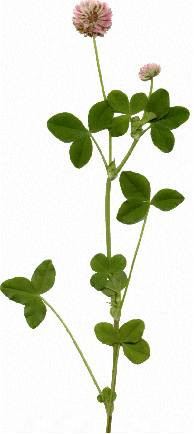
- small ½–inch pink flower
- grows 15–30 inches high
- no white “V” on the leaves
- Remove poisonous plants: Plants like buckwheat, buttercup, St. John’s wort and alsike clover can cause photosensitization, increasing the risk of sunburn. (www.ontario.ca/)
- If you believe your horse may have come into contact with a poisonous plant, then check your pasture and remove those plants. Put your horse in a barn out of direct sunlight and feed dry hay until he has recovered. Consult your veterinarian in severe cases.
- In the case of acute alsike clover poisoning, a complete recovery is normally seen in a matter of a week. After the horse has been removed from the pasture. Chronic cases of alsike clover have a poor prognosis and may die of liver failure. (www.ontario.ca/)
- Possible treatments: Your vet might recommend corticosteroid injections, depending on the severity. The severe stress of photosensitization and extensive death of skin tissue can be highly harmful, even deadly. Corticosteroid injections may be helpful in the early stages. Wounds to the skin should be kept clean to minimize secondary skin infection
Horse Sunburn Treatment
1. Immediate Care:
- Soothing ointments: Apply aloe vera or other soothing ointments to sunburned areas. Reapply daily.
- Put your horse in a shaded pen or barn to prevent further burning.
- Provide plenty of fresh water
Here are a few options to treat sunburn in horses:
StableLine Sunburn Relief Cream is a blend of pure essential oils in an emollient base to soothe, calm and moisturise irritated skin.

Aloe Heal is an excellent first aid cream especially formulated for use on minor cuts and abrasions, skin irritations,
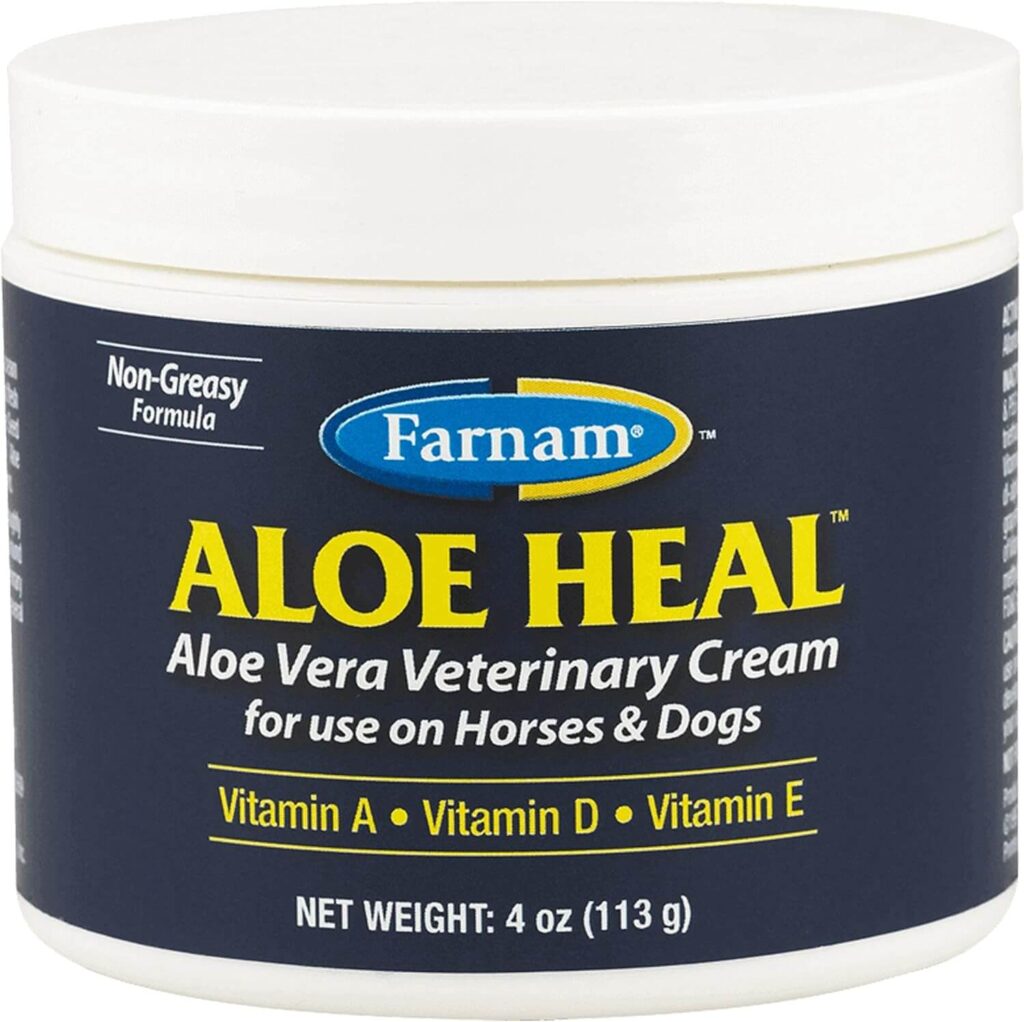
2. Hydration:
- Plenty of clean water: Ensure your horse has constant access to fresh, clean water to stay hydrated and help heal damaged skin. Keep the water trough filled and clean to encourage drinking.
Severe Cases:
Skin Cancer:
- Squamous cell carcinoma: Prolonged UV exposure can increase the risk of skin cancer, particularly in light-skinned areas.
- Regular checks: Monitor your horse for abnormal growths or lesions and consult a vet for any concerns.
Conclusion to Horse Sunburn Treatment
The most important thing horse owners can do is to balance sun exposure to ensure their horse’s overall health while preventing sun damage. Simple measures like providing shade, using protective gear, and applying sunscreen can make a significant difference. By being proactive and attentive, you can enjoy sun-filled days with your horse safely and healthily and you won’t need horse sunburn treatment.
Other Posts you will like:
How Often to Trim Horse Hooves – Find out Here
The Best Horse Breeds for Barrel Racing to Win
Best Grooming Kit for Horses -Brushes to Make the Job Easy
